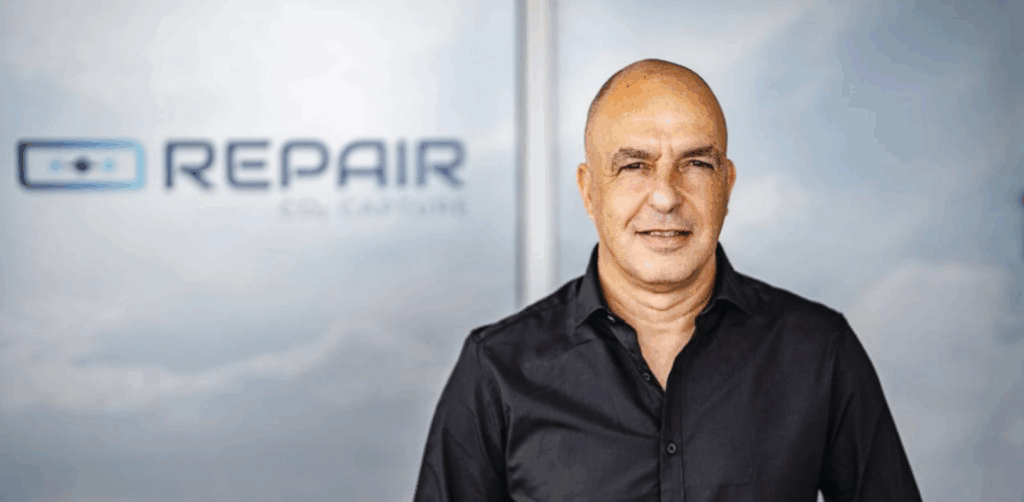Partnership extends from direct air capture to industrial CO2 streams with concentrations as low as 0–5%.
Focus on France, the UK, and Poland, integrating capture systems with onshore CO2 storage hubs.
Technology cuts energy use by 70% compared to conventional methods, aligning with EU climate regulations.
A New Front in Carbon Management
C-Questra and RepAir Carbon are deepening their collaboration in Europe, setting their sights on industrial emissions that have long resisted cost-effective abatement. The companies will expand from their existing joint work on direct air capture (DAC) to include capture of diluted CO2 streams directly from factories and power plants.
The move responds to mounting regulatory and financial pressure on European industries to address carbon output. Aluminium smelters and gas turbine operators, two of the partnership’s initial targets, produce emissions with low CO2 concentrations that are typically uneconomical to capture using established methods.
Technology Shift for Hard-to-Abate Sectors
RepAir brings to the table a proprietary electrochemical process that consumes 70% less energy than standard carbon capture systems. This advance opens a pathway for facilities to cut emissions at concentrations that were once prohibitive.
“Europe’s industries urgently need affordable and sovereign access to CO2 storage,” said Walid Sinno, Chief Executive of C-Questra. By pairing RepAir’s modular capture units with its planned onshore sequestration hubs, C-Questra aims to deliver end-to-end solutions that shorten deployment timelines and reduce the capital intensity typically associated with carbon capture projects.

The integrated model is designed to meet industrial emitters’ demand for “bankable” options, especially as compliance costs rise under the EU Emissions Trading System (ETS), the Carbon Border Adjustment Mechanism (CBAM), and the Net-Zero Industry Act (NZIA).
Market Focus and Deployment Strategy
The partners will focus initially on France, the UK, and Poland—three countries where C-Questra already operates and where energy-intensive industries face strict decarbonisation mandates. The planned pilot projects are expected to demonstrate both technical feasibility and financial viability, paving the way for commercial-scale deployment.
For companies facing penalties under the ETS or tariffs under CBAM, the potential to integrate capture and storage into existing operations offers a hedge against rising carbon costs. The combined solution also positions industrial operators to attract green financing, as investors increasingly tie capital allocation to credible decarbonisation strategies.
Permanent Storage and Policy Relevance
The emphasis on secure, long-term storage is central to the collaboration. “This expansion with C-Questra allows us to address both carbon removal through DAC and emission reduction at industrial sites – and to ensure every ton we capture is permanently and safely stored underground,” said Amir Shiner, CEO of RepAir.

By offering verifiable sequestration, the model aligns with policymakers’ calls for robust monitoring and reporting standards. It also provides assurance to investors and corporate boards concerned about the durability of carbon credits or offsets linked to less permanent solutions.
RELATED ARTICLE: DAC Startup NeoCarbon Produces First Concrete Using Captured CO2
Implications for Executives and Investors
For Europe’s industrial leaders, the partnership signals a potential shift in the economics of carbon capture. Lower energy costs and modular deployment reduce both operating expenses and upfront risks, making the technology more attractive for sectors with slim margins.
Investors will note the governance angle: by aligning with EU frameworks and embedding sequestration into the model, the partnership reduces regulatory uncertainty. This could support the creation of new financing structures around carbon capture and storage (CCS), including long-term offtake agreements and securitised carbon assets.
For policymakers, the move adds momentum to Europe’s ambition to secure domestic CO2 storage capacity rather than relying on cross-border solutions. Sovereignty in carbon management has become a priority issue in Brussels, particularly as industries warn of competitiveness risks under CBAM.
A Step Toward Europe’s Industrial Transition
The C-Questra–RepAir partnership highlights how innovation and infrastructure can combine to reshape the climate outlook for Europe’s industrial core. By marrying capture at the source with permanent storage, the companies aim to de-risk pathways to net zero for some of the hardest-to-abate sectors.
If pilot projects deliver as planned, the approach could provide a replicable model across other industrial hubs, reinforcing Europe’s push to couple industrial competitiveness with climate resilience. For global executives and investors, the development offers a window into how technology, regulation, and capital may align to address emissions once considered beyond reach.
Follow ESG News on LinkedIn

